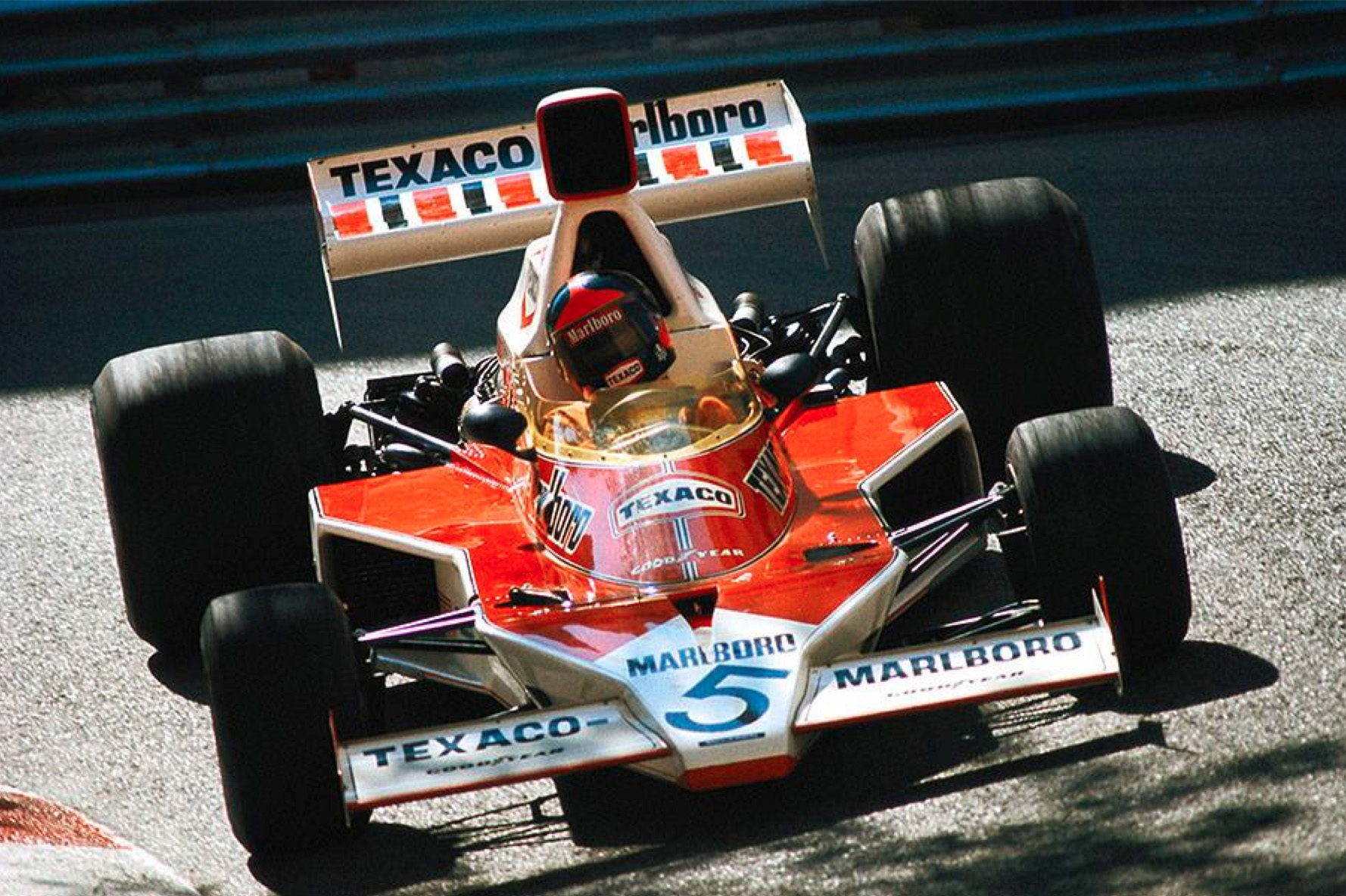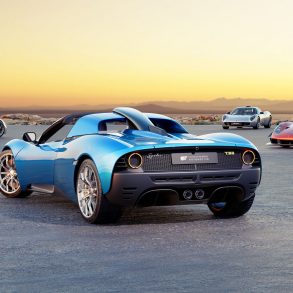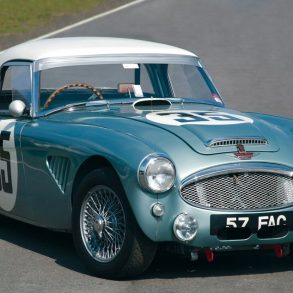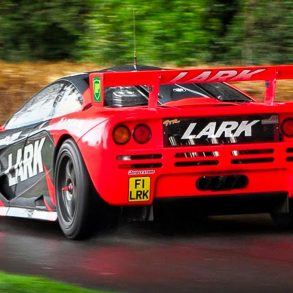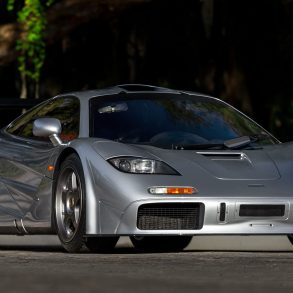McLaren M23
Car: McLaren M23 / Engine: V-8 Ford-Cosworth / Maker: McLaren / Bore X Stroke: 85.7 mm X 64.8 mm / Year: 1968 / Capacity: 2,993 cc / 182.5 cu in / Class: Formula 1 / Power: 470 bhp at 10,500 rpm / Wheelbase: 116.1 inches / Track: 55.9 inches front and rear / Weight: 1267.7 lbs
Following the lead of the Lotus 72 and their own M16 Indianapolis car Mclaren’s Gordon Coppuck used the same chisel nose, side radiators and wedge shape for their new Formula 1 car, the M23. Regulations for 1973 required cars to have a deformable structure and the McLaren filled a 3/4 inch cavity in the frame and it’s aluminum skin with aerosol foam. Debuting in 1973 the car used the ubiquitous Cosworth DFV prepared by John Nicholson’s specialist tuning company.
The M23 had a rising rate inboard suspension with outboard disc brakes at the front and outboard suspension and inboard disc brakes at the rear. In its 5 1/2 year life, 4 at the front of the grid a total of thirteen cars were built. Initially sponsored by Yardley it scored a fifth place first time out in South Africa. They would score an impressive three wins that year; one by Denis Hulme and two by Peter Revson.
For 1974 the now Marlboro sponsored team Hulme was joined by Emerson Fittipaldi who replaced Peter Revson. Prolonged winter testing by Fittipaldi led to changes to the car, such as a 3in. longer wheelbase and a 2in. wider track, based on his considerable experience of the Lotus 72. This resulted in better weight distribution and more traction.
Fittipaldi loved testing. According to Coppuck,
“He enjoyed this side of his job more than the races.”
That was to prove a valuable factor as a tough season progressed.
The McLarens started the season with three straight victories, two by Fittipaldi and one by Hulme. By Monaco Fittipaldi led the drivers championship and at the US Grand Prix he secured his second title with the Constructor’s Cup for the team. The 1975 season would prove less successful for new driver James Hunt but the next season saw Hunt claim the title after an epic season long battle with Niki Lauda. The modifications for 1976 included a six-speed Hewland gearbox, refined aerodynamics and a weight savings program that saved at least 30lbs. Later that year McLaren also replaced their onboard battery with a compressed-air starter system saving more weight.
The McLaren M23 was never the most technically advanced car entered but sound preparation, attention to detail and some talented drivers gave the four-year old car 21 wins and 2 World Championships though a fifth year would prove one year too long.
Gordon Coppuck
Gordon Coppuck was born on the 8th of December, 1936. he attended Queen Mary’s School for Boys before becoming an apprentice at the National Gas Turbine Establishment (NGTE). In 1965 he followed his ex-NGTE colleague Robin Herd to McLaren, working as his assistant. In 1971 he became chief designer at McLaren, responsible for various models including the Indianapolis 500 M16 and as well as the world championship winning M23. When McLaren merged with Ron Dennis’s Project Four in 1980, Coppuck departed, rejoining Herd, now at March.
“I left at the end of 1980 because I felt that, as a team, we were just too small-minded. We weren’t seeing the way the sport was going and Teddy had refused to ask Marlboro for as much money as John Hogan was offering us – he said he was frightened of killing the goose that laid the golden egg. He didn’t have the vision to see that we needed our own wind tunnel, for example, to learn more about what was happening underneath the car. Carbon fibre was coming, it was going to be a different sport, budgets would have to be in the hundreds of millions, we’d need many more people. “Ron Dennis had the vision to see this and make it happen. I knew I was incompatible with Ron, so I left at the end of 1980, but I’d like to say how much I respect him for what he has achieved. Ron had the ability to sustain McLaren as a winning Formula 1 team.” – Gordon Coppuc


